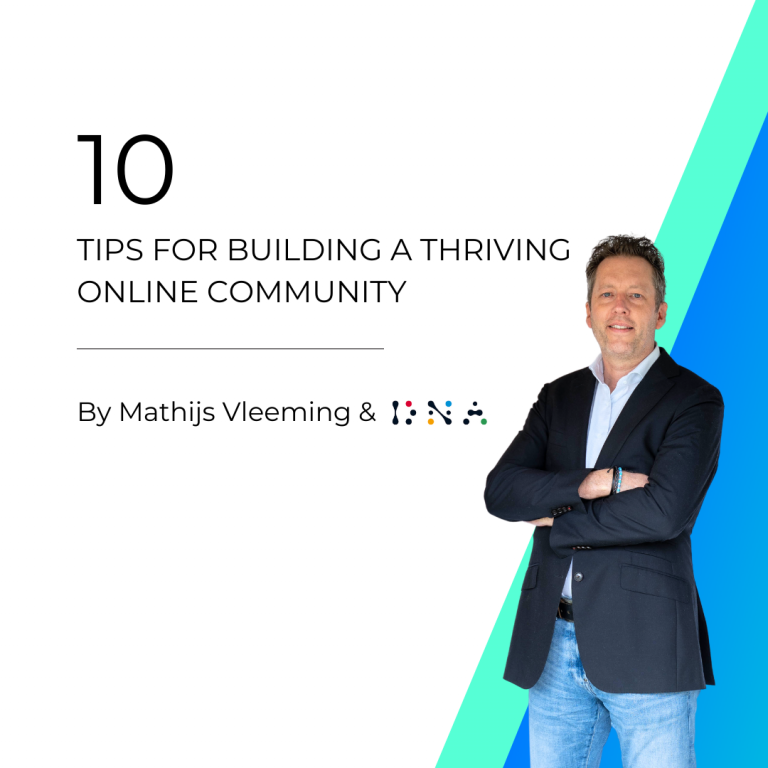The secret to a successful community: privacy
Anyone starting a community cannot avoid privacy. Safe handling of your users’ privacy is essential for a successful community. Users need to feel that their data is safe before sharing personal information or participating in conversations.
So, as an administrator, this is something you must consider carefully. What are you allowed to know about your users? How can a user share content securely? And how much control does a user get?
A profile always contains personal information
Community platforms offer users the opportunity to create detailed online profiles and connect with other users in various ways.
This means that users share personal information with other users, such as a person’s gender, age, family details, interests, educational background, and sometimes employment information.

Requesting profile information
For a well-functioning and secure community, a user’s name and e-mail address, at a minimum, must be required. And the user is often given a choice as to whether he or she wants to share these details openly with the rest of the community.
As an administrator of the community, you should look closely at this profile at the outset. What else can or should a user share besides the name and e-mail address? For example, do you require a job title and employer name or can they leave it blank? And to what extent can a user choose what to share and what not to share?
When asking these questions, keep the purpose of the platform well in mind. For a professional association where sharing professional knowledge is the essence of the community, information about work experience is a requirement. But this is different when it comes to a patient association.
Three phases of profile use
When it comes to profile data and especially profile usage, we distinguish three main phases.
1. New users
When someone logs into your community for the first time, it makes sense to ask the user to create a profile. But how do you ensure that each user fills out their profile as completely as possible? And perhaps also provide information on items that are not mandatory? Good onboarding can help with this.
2. Existing users
If users have been participating in the community for some time, it is important that users have the ability to quickly and easily modify or add to their profile. At this stage, it is important that they can not only edit the data in their profile but also what information they share and with whom.
3. Ex-users
When a user leaves, it is important to think about the privacy and security of their user data. What happens to the profile data? How long, if any, is it kept? Make sure this is made clear in the privacy policy.
Visibility of user information
Not only do you need to think about what user information you are requesting, but you also need to make decisions about who is allowed to see user information and what user information is visible to whom. Is this the case for every visitor, or is it only for logged-in users? Who decides what information is visible, the platform administrator or the user themselves?
Privacy and security when sharing content
On a community platform, users are encouraged to share content, such as articles, photos, videos, and links to other interesting content. As an administrator, you make impactful decisions in this area.
Sharing content or posting comments anonymously or not?
Encouraging engagement and experiencing a sense of connection often occurs when a profile includes a photo. People like people and knowing who posted certain content builds trust. Therefore, being able to add a photo to the user profile is essential for an online community.
Still, in some cases, it can help to be able to post content anonymously. Any barriers or feelings of embarrassment disappear when someone anonymously asks an awkward question.
If you choose to be able to post content anonymously on your platform, just keep in mind that you moderate the content properly so that the conversation and content remain respectful and safe.
Open or gated content (or combine those)?
Is content also visible to visitors who are not members of the community? In other words, would you choose gated content? Or would you opt for a combination where some content is visible for all and other content is only available to members?
If you choose the latter option, you have to ask yourself what guidelines apply to the gated content. Does the user sharing the content get to decide whether it is free or private? Or does it depend on the location or the subject matter?
What to do with content when users leave?
If a member leaves the community, you would prefer their content to remain available on the platform. Therefore, provide options: a user can choose to keep the content intact, anonymously if necessary. Or the user may choose to delete everything and exercise its right to be forgotten.
Sending notifications and privacy
Finally, many communities recognize the issue of how to deal with sending notifications to users. As an organization, can you send users notifications? If so, how many and how often?
Do users automatically receive notifications of posted content upon registration and can they manage those topics themselves afterward? Or must a user first indicate they want information about a subject and perhaps miss out on the content?
Conclusion
A successful community is a safe community where the privacy of users is well thought out. When setting up an online community, think carefully about what user information you request, how users can manage their profile, what information and content are visible, whether you allow open or closed content sharing, and what you do with the data and content of former members. It is also important to think about sending notifications and how you set that up.
Want more tips on the opportunities and possibilities to encourage more exchanges in your community?
Feel free to contact us, we would love to brainstorm with you.
Also read

Why choose a Yunits community platform over Microsoft Teams?

10 tips for building a thriving online community

